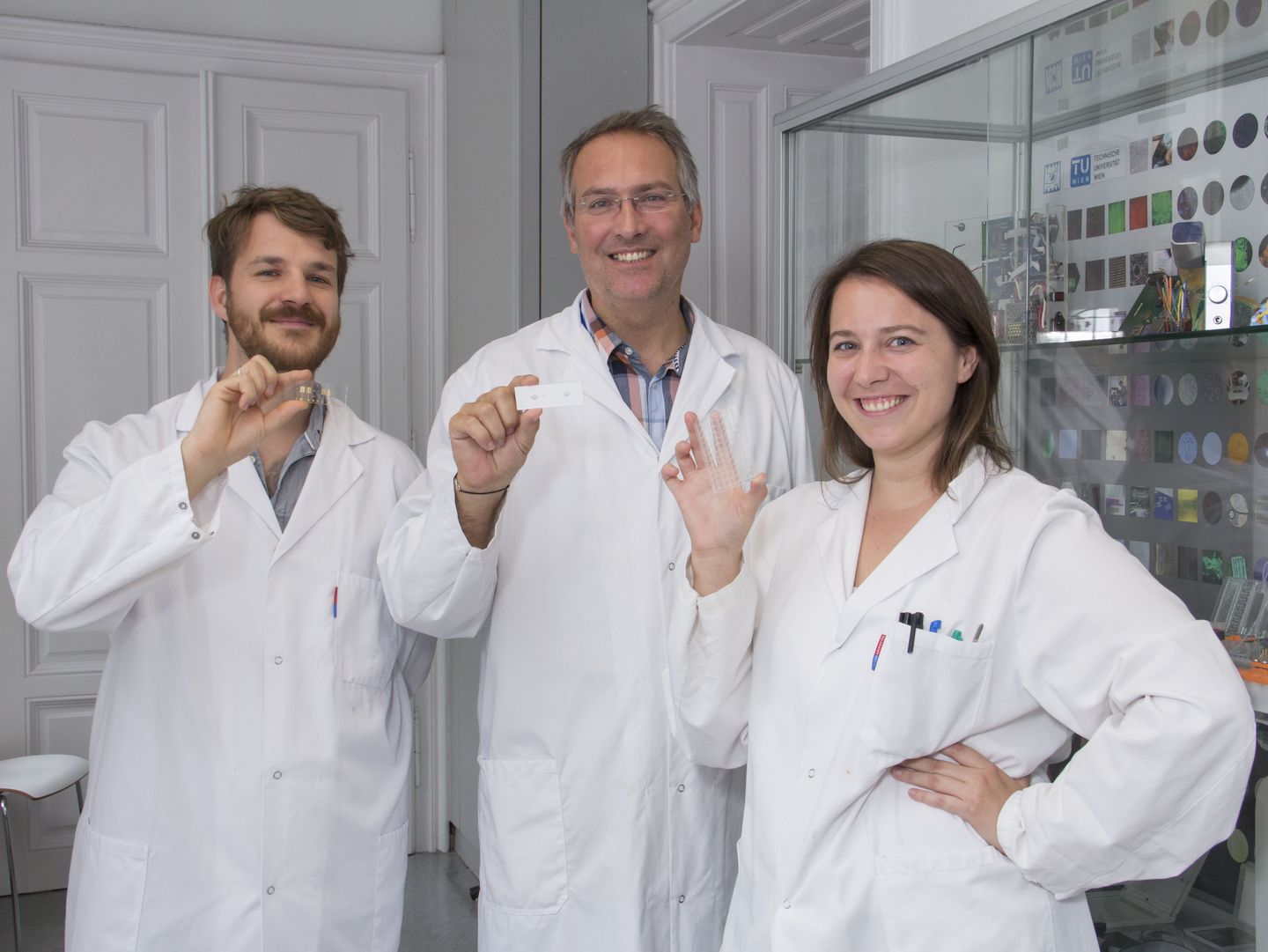MechanoBiology Competence Centre: a Czech-Austrian success story
The Mechanobiology Competence Centre facilitates cross-border cooperation between Austrian and Czech institutes and is funded under an Interreg programme. The LBI Trauma, AUVA’s research centre, is one of the three Austrian members. Joint research is being conducted into how mechanical forces affect tissue and cells, what signals they trigger in and around the cells and how this can stimulate the body’s own healing process.
The right amount of force is essential during the healing phase, for instance after bone or cartilage damage. If there is too much force too soon, a new defect will develop. If there is too little, the newly formed tissue can only fulfil its function to a limited extent. The complex interactions between mechanics and biology are far from being fully understood. New findings can be taken into account in future therapies to enable patients to heal completely.
Mechanics not only affect newly formed tissue, but also influence the cells themselves – with great effect. It has long been known that stem cells can be stimulated to develop in certain directions. Bone, muscle, cartilage tissue – all this and more can be obtained from tissue stem cells.
Usually, stimulation takes place via chemical signals, such as the addition of growth factors. However, it is becoming increasingly clear that the spatial environment of the cells also plays a decisive role, and is even sufficient to stimulate development into a specific tissue. If the stem cells are cultivated in a soft environment that allows for a round shape, they become fat cells. Biomaterials with high strength, on the other hand, on which the cells grow stretched out, bring forth bone cells. The connection to nature as a role model is obvious. The underlying mechanisms are being studied by scientists worldwide. Changes in the cytoskeleton (complex support structures within the cell) often play a major role, but also proteins that change under mechanical pressure.
In this context, the team around Giancarlo Forte from the Mechanobiology Competence Centre, located at St. Anne’s University Hospital in Brno, has made a particularly remarkable discovery. Just by changing the cell geometry, they succeeded in suppressing a certain protein, YAP, which is particularly strong in tumour cells. Not only were they able to observe and describe the underlying mechanism, but they were also able to demonstrate in the laboratory that suppressing YAP turns breast cancer cells into harmless fat cells.
“What I particularly like about the Mechanobiology Competence Centre is that the project partners have very different expertise and complement each other so well. In addition, it is very helpful that the distances between the project partners are manageable. Therefore, day trips to partner labs are no problem,” says scientist Barbara Bachmann, describing her experiences in the project. She works for the LBI Trauma and is researching the development of bio-chips in close cooperation with Peter Ertl’s group at the Vienna University of Technology. The credit-card-sized plastic plates contain chambers in which tissue is grown with the help of body cells, and fine channels that serve to supply nutrients. Compressed air can be used to inflict targeted mechanical injuries on the tissue. The transparency of the plastic enables scientists to closely observe the healing process at the cellular level. The use of bio-chips is versatile – they are considered a promising addition to/replacement of animal experiments in basic research.
The chips are also particularly interesting for personalised medicine, because they can be populated with the cells of patients in order to study them closely. The behaviour of cells is individual, the reactions to drugs often differ from patient to patient. The nutrient lines on the bio-chip allow the delivery of drugs, and the dose can also be varied. In this way, the optimal therapy can be determined on the patient’s tissue – even before the patient actually comes into contact with the medication.
The development of bio-chips unites a wide variety of scientific disciplines: from medicine to manufacturing technology to microfluidics, i.e. the study of the flow behaviour of tiny quantities of substances. “Only through interdisciplinary diversity can we carve out a lead and achieve research results that cause a stir internationally,” Peter Ertl knows.
The scientists of the competence centre meet regularly to discuss current results and further experiments. They can also draw on equipment and methods from the partner institutes. There are therefore no longer any limits to the spirit of research.
